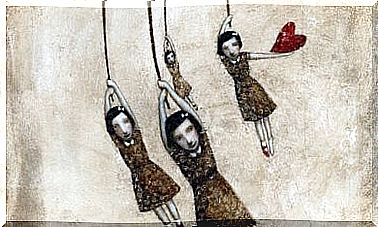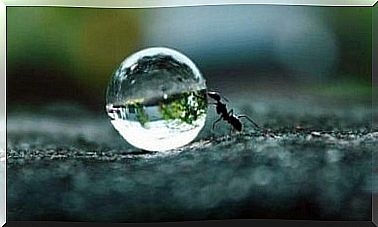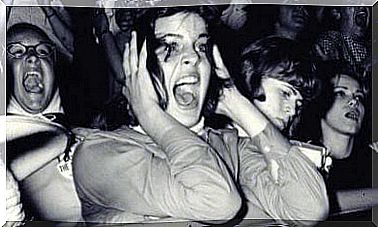Active And Passive Friendship – Here Are Their Characteristics

We have all experienced active and passive friendships. Both types are simply part of the structure of our human relationships.
But you inevitably appreciate some friends more than others. Because there will always be some people you feel closer to and others you only meet from time to time.
We are all social beings. For this reason, you need the daily interactions. They make you feel good. In fact, you can enjoy your everyday snack in the grocery store or a cup of coffee with a colleague as much as an intimate chat with your best friend.
There are different types of friendships. As long as they are sincere and enriching, it does not matter how intimate they are. Authenticity is the key.

What is the difference between them?
If you care about your relationships, you agree that calling someone a friend is something special. You do not do it every day and not everyone deserves that title. Unfortunately, some people do not understand the true meaning of friendship and also violate it by destroying trust and respect. We are sure that you have had more than one rewarding friendship, the kind of friend you can share both your joys and sorrows with.
In the 1970s, Mark Granovetter, a professor of sociology at Stanford University, published a book entitled The Strength of Weak Ties. In this study, he reformulated the concept of friendship.
It is extremely useful to read this book in relation to today’s new technology, as it makes you understand how important the friends you make on social networks can be.
We cannot stress enough its relevance. In fact, every friend you make through Facebook or other social networks can be just as important as an old childhood friend. Let’s find out more.
Active friendship, the deep contacts that enrich your life
Active friendship is present in your life daily. You look at these friends as your family. In fact, they know more or less everything about you. You share your experiences, values and secrets with them. They are your refuge when things go wrong. In fact, they are sometimes more important to you than your partner.
Maybe some have been your friends for years, maybe since you started school. Others may be newer. Still, you can still feel as if you have known them your whole life.
You are constantly interacting with these types of friends. It does not matter if you are away from each other from time to time. For the desire to know how they are doing in life and what they are doing is constant. In addition , it makes you happy to feel that you always have their support.
Passive friendships represent weaker bonds that make you feel good
Passive and active friendships are not opposites, they complement each other. In addition, Mark Granovetter’s theory has become more relevant in recent years. This is because his ideas clearly reflect what is happening in our new technological and digital society.
Passive friendships are those that are outside your circle of intimacy. But they still make you feel good. They can be, for example, a neighbor, a friend of a family member, the manager of the grocery store, the colleague you get along with extra well or the person you meet once a week on the subway on the way to work and exchange a few words with.
The basic difference between passive and active friendship is closeness and affection. A passive friend can be someone you meet on social media. You like to talk to the person and you share common interests. Many of these relationships do not extend beyond that.
According to Mark Granovetter, these passive, non-binding relationships are a great stimulus in everyday life. They make you happy and relaxed and offer you different perspectives. You learn from them and they make you feel a sense of belonging.
Active and passive friendships are both important

It is usually best to have a few close friends. But when it comes to passive relationships, the more the better. Here is an example. Steve Jobs designed the Pixar building with a very specific idea: To make it easier for employees from different departments to mingle with each other.
His idea was to achieve the kind of passive friendship that stimulates creativity. These random encounters were always positive, friendly and enriching. Ideas were generated and stress decreased. It was not necessary to create close friendships, only bonds of courtesy and kindness where ideas flowed. That was the key.
For this reason, it is a good idea to increase your daily social contacts to increase your well-being. Conversations, no matter how short, enrich your day. And just as you do in your close relationships, you should cultivate these ties for the rest of your life.








